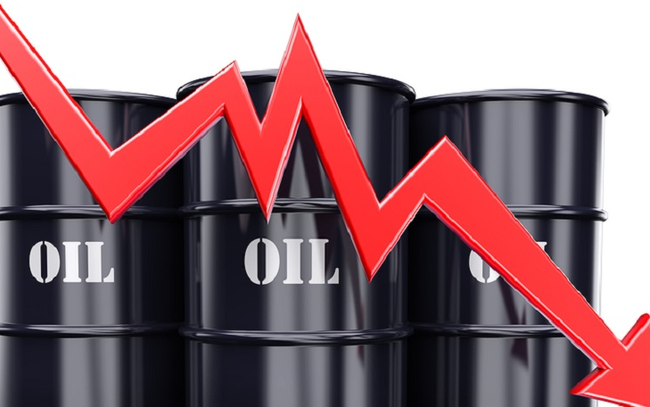Oil and gas groups switch strategies to avert strain
 |
| Oil and gas groups switch strategies to avert strain - illustration photo |
The recent plunge of US crude oil to below $0 per barrel has burned oil and gas stock investors who had bet on the revival down the road.
Analysts expected a big drop in energy industry spending to amplify the economic fallout from the ongoing coronavirus pandemic.
“Even if the negative price effect is short-lived, low prices are likely to persist given weak demand due to COVID-19 and the lack of available storage capacity,” said Binh Truong, deputy head of research at Yuanta Securities.
PetroVietnam (PVN) and its subsidiaries have completed their business proposals for 2020, which are based on pre-plunge oil prices of $50-60 per barrel for Brent crude, as indicated clearly in their recently published annual reports. However, Brent crude now trades around $19.6 per barrel, 73.6 per cent lower than last year.
Market watchdogs believed that this is a signal prompting oil producers to taper off their production faster, since the market is drowning in the commodity at this point.
“We view upstream companies, such as those in the mining and exploration sectors, as most directly impacted by the oil price crash,” added Truong.
In general, oil and gas businesses are negatively affected by prices but the magnitude of the hit depends on their business model.
Some businesses have secured contracts to provide core services for the whole of 2020, such as PetroVietnam Drilling and Well Services Corporation (PVD), and are looking at only short-term impacts from oil prices staggering into negative territory.
Gas distribution firms are also looking at limited impacts since they could make up the gap between purchasing and selling prices through transportation fees. For instance, PVGas will likely benefit from the sharp drop in the price of oil.
According to PVGas, its main strategy to cope with the oil prices is to cut operating costs and improve efficiency, instead of cutting capital expenditure. The firm also remains committed to its ongoing projects such as the second phase of Nam Con Son 2 pipeline, Sao Vang Dai Nguyet pipeline, and the Thi Vai liquefied natural gas terminal, said VNDIRECT analyst Mai Pham.
However, there are plenty of volatility and market gyrations which might hurt performance across the board. Other companies in the retail-oriented fuel industry will likely be impeded, at least in the short term due to high inventory costs. Investors who have a strong appetite for risky assets should be cautious of Petrolimex (PLX) and PetroVietnam Oil Corporation (PVOil), Pham added.
On the other hand, many financiers have been hopeful that lifting Vietnam’s social distancing restrictions, coupled with the plunging oil price, would be a boon for some stocks.
Some sectors that use oil and gas as their main inputs are transportation and electricity generation firms, as well as fertiliser suppliers. For example, Vietjet (VJC) and Vietnam Airlines (HVN) are among the beneficiaries of low oil prices and the Vietnamese government’ approval to restart domestic flights.
PetroVietnam Power Corporation (PV Power) and PetroVietnam Fertilizer and Chemicals Corporation can also turn this volatility to advantage.
Additionally, companies that use inputs the prices of which are highly correlated with oil should also benefit from the oil crash. These include plastics companies such as Binh Minh Plastic JSC (BMP), Tien Phong Plastic JSC (NTP), and An Phat Bioplastics JSC (AAA).
Energy analysts cautioned that the scope of the oil demand lost to the pandemic means there is little producers can do to give prices a short-term boost.
On the flip side, the price of natural gas has been relatively stable. Natural gas is trading at $1.96 per million British thermal unit, up 8.35 per cent year-to-date, albeit down 22.0 per cent on-year.
US oil futures plunged below zero for the first time on April 21, a chaotic demonstration of the dwindling capacity to store all the crude oil that the world’s stalled economy would otherwise be using.
Though the oil price recovered to close in positive territory the following day, the crash illustrated the dangers of holding oil futurses that will expire soon.
As of April 28, US crude futures for delivery in June slid 25 per cent to $12.78 a barrel, dropping near a 21-year low. The US benchmark started the year above $60. That effectively means that sellers must pay buyers to take barrels off their hands, according to the Wall Street Journal.
What the stars mean:
★ Poor ★ ★ Promising ★★★ Good ★★★★ Very good ★★★★★ Exceptional
Related Contents
Latest News
More News
- Securing capital and efficiency for Vietnam’s 2026-2030 growth ambitions (December 17, 2025 | 10:00)
- Energy sector in need of blended finance mechanisms (December 17, 2025 | 09:00)
- Vietnam still has room to mobilise capital for sustainable growth (December 17, 2025 | 08:57)
- Long-term capital seen as key hurdle to green growth (December 16, 2025 | 08:00)
- Gold prices swing amid tax debate and import uncertainty (December 15, 2025 | 18:04)
- Agribank frames bank credit as catalyst for green growth (December 15, 2025 | 17:59)
- Vietnam’s green transition demands collective financial action (December 15, 2025 | 12:00)
- VIR workshop highlights capital and policy for sustainable development (December 15, 2025 | 11:00)
- Promoting digital assets initiative in Vietnam (December 13, 2025 | 09:30)
- Experts flag gaps as national financial strategy under review (December 12, 2025 | 15:13)

 Tag:
Tag:






















 Mobile Version
Mobile Version